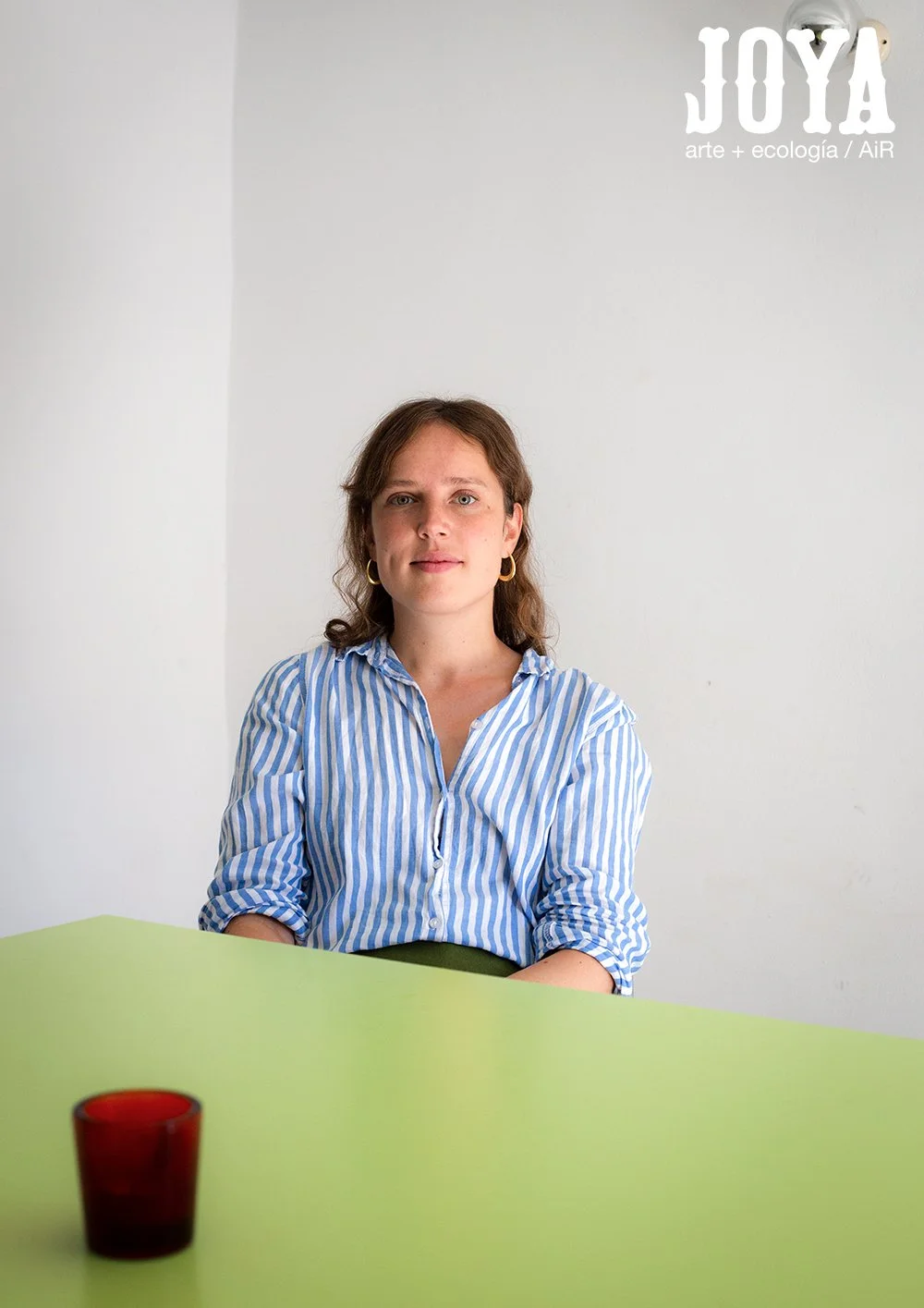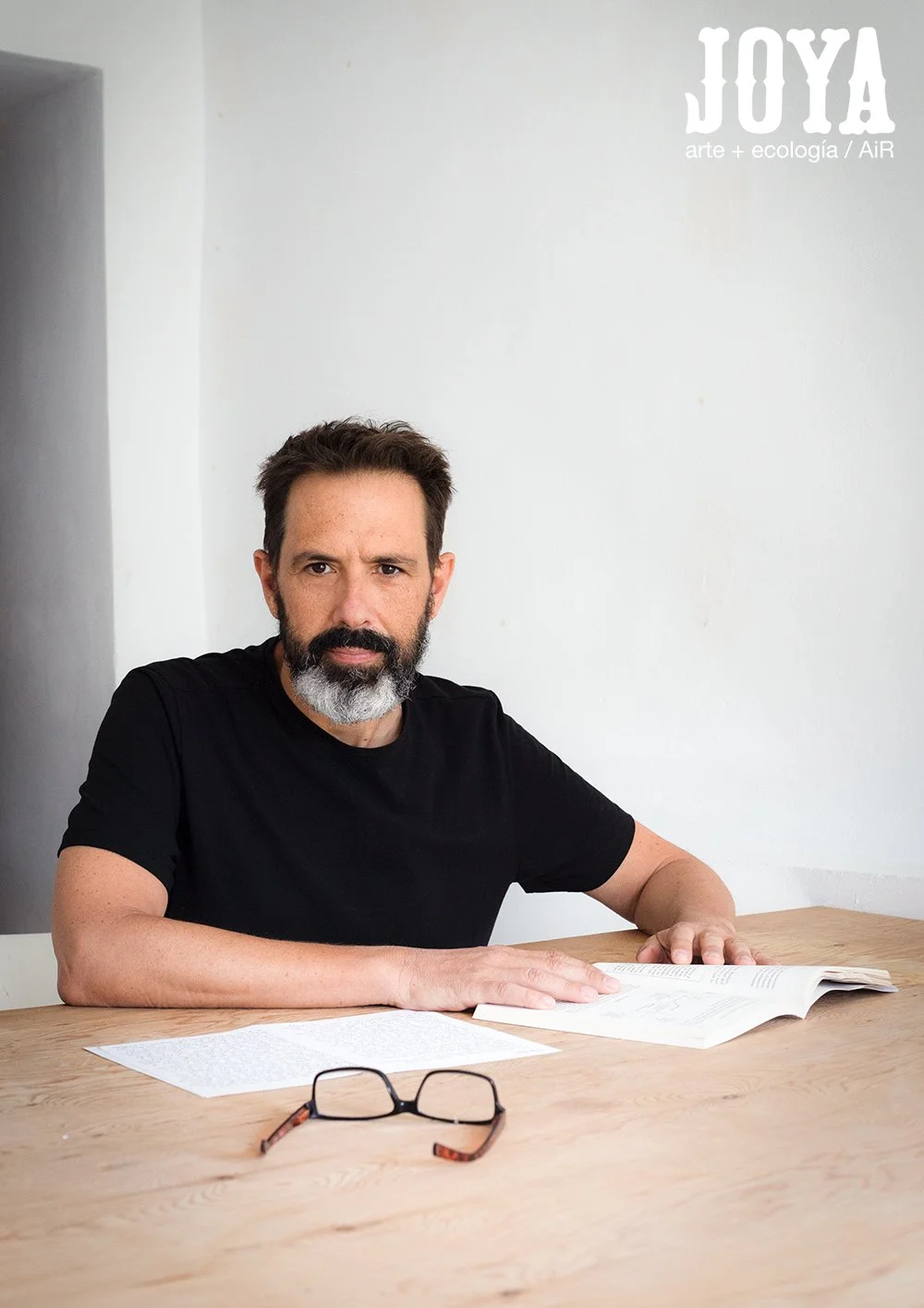Joya: AiR / Sarah Wishart / GBR
“I didn’t really know what to expect from my fortnight at Joya AIR, as I’d never been able to devote any time to a residency before. The demands of full-time work and a part-time PhD plus a range of collaborative projects hadn’t left much time for that sort of focus.
I had deliberately avoided setting ambitious targets. Instead, I wanted to simply allow myself to spend time with my writing project – and the only target I set myself was that by the time I came home, I would have developed my writing processes and practice in some significant way.
This writing project I proposed focussing on first exploded into existence around three years ago now, just before I applied to Joya AIR in 2019. The project, like my 2020 residency, had been delayed by the chaos of the last two years, so it has been long awaited.
It has been a beautifully gentle fortnight, waking early I’d walk or hike or go for runs before the sun was at its fiercest, and then I’d amble up to my sunny writing studio above Donna and Simon’s kitchen, with its view of the hills, the wind turbine and an olive tree buzzing with wasps all day. Despite my terror of wasps, I grew used to enjoying watching them at work in the tree, with my windows open and mosquito nets keeping the terror at bay. I’d work on one or other aspect of my plans and then lunch and siesta and then usually buzz through some writing at the end of the day. I’ve never been able to do academic writing at the end of a day so this was a revelation. All the artists who were able would then gather to watch the sun go down every night, and we’d eat delicious meals together, talking of how our days had gone, our artistic practices and lives while watching satellites spin around far above us under the Milky Way.
I made many discoveries about my writing practice over the last two weeks and I’m glad I didn’t set myself a big number of words to have pursued, and most likely fail at achieving it. Instead, my hopes to create a space to sit with ideas and how I could take what I’d learn and apply it to a normal week at home, turned out to be achievable. But more than that – to be pleasurable. I also created space to read similar sorts of books to the one I’m working on and for the time to listen and read up on writers who’ve explored the craft of writing –like Alan Moore, Stephen King, Ursula K Le Guin and Vivian Gornick.
By the end of my two weeks – I’d read a book a day and finished my masterclass with Mr Moore. I’d also surprised myself by the clarity and speed of the decision to remove 15k words from the project and to go in a completely different direction. I set myself a target of 1000 words a day when a day was a writing day and completed 10k words by the end of my time.
I discovered (as I’d hoped and suspected) that the project was sound, is sound. But beyond this – the conversations and connections I formed in this time were as tender and special as the time I had to look at the way I worked. Simon and Donna and their fantastic incredible spaces enable us to create rich temporary communities. Joya AIR was worth the wait, and was an incredible experience, and I hope the small community I was part of during this time is not that temporary”.
Sarah Wishart
Sarah is a writer, researcher and artist with a Phd in how the documentation of live art might include the memories of audiences. She’s currently working in film, text, voice, textiles and collaborative practice. She also works as Creative Director for a human rights journalism/communications charity - Each Other and opened their Scottish office in Glasgow in July 2021.





















































